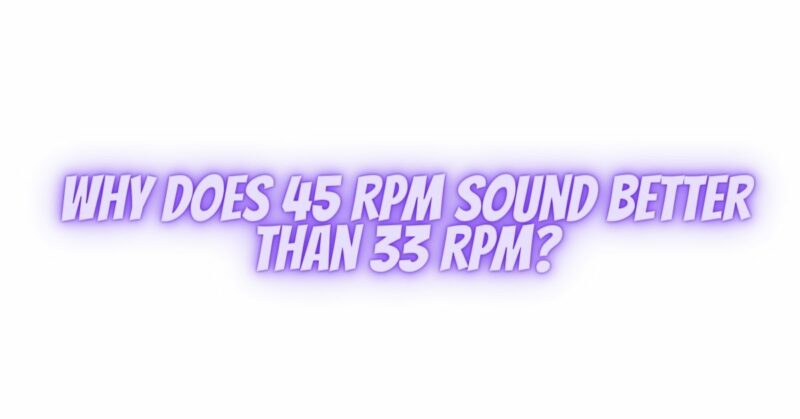If you’re an audiophile or a vinyl enthusiast, you might have heard that 45 RPM records often sound better than their 33 RPM counterparts. While it’s not a hard-and-fast rule, there are technical reasons behind this perception. In this article, we’ll explore why 45 RPM records are often considered superior in terms of sound quality.
1. Groove Size and Spacing:
One of the primary factors that contribute to the perceived superiority of 45 RPM records is the groove size and spacing. Here’s how it works:
- 45 RPM Records: These records typically have wider grooves and more spacious spacing between them. This allows for more detailed and accurate audio reproduction. With fewer grooves to accommodate the same amount of music, each groove can capture more sonic information, resulting in better fidelity.
- 33 RPM Records: In contrast, 33 RPM records have narrower grooves and tighter spacing between them. While this is necessary to accommodate longer playing times (such as full-length albums), it can lead to limitations in capturing fine audio details. Inner grooves on 33 RPM records can suffer from inner groove distortion due to the tight spacing.
2. Reduced Inner Groove Distortion:
As mentioned, inner groove distortion can be a challenge with 33 RPM records. When a stylus travels closer to the center of the record (where the grooves are tightly packed), it encounters difficulties in accurately tracking the audio information. This can result in distortion and a loss of fidelity, particularly in the high-frequency range.
With 45 RPM records, the stylus spends less time navigating the inner grooves, reducing the likelihood of inner groove distortion. This leads to a more consistent and faithful reproduction of the music across the entire playing surface.
3. Improved High-Frequency Response:
The wider grooves on 45 RPM records also enhance high-frequency response. Since the grooves can accommodate more detailed information, the stylus can better capture and reproduce the nuances in the treble range. This results in clearer and crisper high frequencies, which are essential for revealing the subtle nuances in music, such as cymbal crashes, string harmonics, and vocal sibilance.
4. Reduced Surface Noise:
The wider grooves and lower linear velocity (the speed at which the stylus travels across the record) of 45 RPM records can contribute to reduced surface noise. Less surface noise results in a cleaner and quieter listening experience, allowing the music to shine without distractions.
5. Audiophile-Grade Pressings:
Many audiophile-grade vinyl records are pressed at 45 RPM to maximize sound quality. These records are often mastered and manufactured with meticulous attention to detail, further enhancing their sonic performance. Audiophile 45 RPM pressings are highly sought after by enthusiasts for their exceptional sound quality.
Conclusion:
While 45 RPM records do have advantages in terms of sound quality, it’s essential to note that both 33 RPM and 45 RPM records can offer excellent listening experiences when well-mastered and pressed. The choice between the two often depends on factors such as the format of the music (full-length album vs. single), the desire for high fidelity, and personal preferences.
Ultimately, whether you prefer 45 RPM or 33 RPM records, what matters most is the enjoyment you derive from your vinyl collection. Both formats have their merits, and the joy of vinyl lies in the tactile and immersive experience it offers to music enthusiasts.


